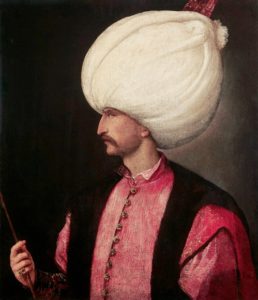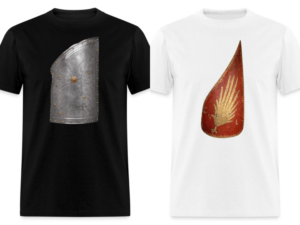25 November 1556 The Diet of Transylvania made Isabella Governor

It was the day when the Transylvanian Diet made Isabella governor of Transylvania until her son, János Zsigmond, came of age. We know that Queen Isabella was the widow of King Szapolyai János of Hungary and that it was Sultan Suleiman who forced her to leave Buda Castle in 1541. Suleiman learned that Isabella wanted to give Buda Castle to the Habsburgs, so he could no longer trust her. You can read my short dramatized account of the circumstances of this event:
https://www.hungarianottomanwars.com/dramatized-historical-writings/suleiman-before-buda/

After that, she went to East Hungary and then she made her court in Transylvania. Her late father’s counselor, Father Martinuzzi György, the “White Monk”, was the tutor of her son, the baby János Zsigmond (later elected King of Hungary and Prince of Transylvania). He, a nobleman, statesman, Pauline monk, later Bishop of Várad, Archbishop of Esztergom, and finally Cardinal, had many debates with Queen Isabella. Both Isabella and Martinuzzi are very exciting and colorful examples of Hungarian history, no wonder they are very controversial figures. You can read more about Martinuzzi’s life here:
https://www.hungarianottomanwars.com/essays/frater-gyorgy-utisinovic-martinuzzi-gyorgy-1482-1551/

The White Monk was busy balancing power between the Austrians and the Ottomans. Finally, in 1549, King Ferdinand of Habsburg and Martinuzzi signed a treaty in Nyírbátor, the eagle’s nest of the Báthory clan. It was almost the same as the previous treaty of Gyalu. According to it, in exchange for Ferdinand’s military help, Queen Isabella and King János Zsigmond would renounce their titles and the Habsburgs would receive Transylvania. It should be noted that Queen Isabella was unaware of any of this, as she was enjoying herself at Déva Castle. When she heard the news, she became very angry. Of course, Isabella did not agree with the treaty and betrayed the secret contract to the Sublime Porte.

In the summer of 1550, civil war broke out in Transylvania. So far, the monk had brilliantly balanced between the two powers, the Ottomans and the Habsburgs, but this eventually led to his downfall. Meanwhile, the Turks watched in alarm as Eastern Hungary grew stronger. The next war with the Ottomans broke out in 1550 when they came in force to expand their occupied territories. The Sultan sent his Chaus (officer) to Transylvania in the spring of 1550, demanding that the noble estates leave Martinuzzi and obey only Queen Isabella and her son. The queen’s supporters began to conspire with Petrovics Péter, the Hungarian Székelys began their rebellion and Queen Isabella gathered soldiers and took refuge in the castle of Gyulafehérvár.

The White Monk had to act quickly, first executing the leaders of the Székely rebels and then crushing the uprising. At that time, Petrovics Péter left the Temesköz region with his army and entered Transylvania. He conquered Csanád, Déva, Vízakna and Alvinc. Pasha Kászim of Buda also came with his troops to Lippa Castle, he was there on 22 October. Martinuzzi had to fight several enemies at the same time. The Ottomans made Ilie II Rareș, Voivode of Moldavia, and the Wallachian Voivode attack Transylvania to punish him.
The Wallachians (Romanians) attacked the Székely Land on 2 November, and the Moldavians were at the Vöröstorony Pass of the Carpathians, but the White Monk led an army against them and defeated the attackers. Then his troops also defeated the army of Comes Petrovics Péter of Temes, who was supporting Queen Isabella. Martinuzzi had a strong army and besieged Gyulafehérvár, but the town defended itself bravely for six weeks. At the end of October, the queen surrendered and “pardoned” the White Monk and became his friend again. You can read more about this here:
https://www.hungarianottomanwars.com/1541-1699/13-november-1550-brother-gyorgy-defeats-his-enemies/


When their troops retreated from there, the army of the White Monk, joined by the soldiers of Nádasdy, Castaldo, and Pallavichi Sforza, rushed to Lippa and besieged it. They soon forced the Bey Ulema to surrender, but the Prior promised safe conduct to the Turkish garrison of Lippa Castle. In fact, the events of this siege led to the fall of Martinuzzi. King Ferdinand betrayed him and ordered his assassination.
When Castaldo saw the Turks marching away undisturbed on 28 November, he was very surprised and began to accuse the Prior of treason. He wrote to King Ferdinand and Emperor Charles V, accusing Martinuzzi of treason. Brother György was in fact negotiating with several Ottoman pashas of southern Hungary to buy some time. As a result, Castaldo was able to persuade Ferdinand, who gave the order for the monk (by then a cardinal) to be murdered. However, the mercenary leaders needed Ferdinand’s approval first.

Castaldo hired the monk’s secretary, Marco Aurelio Ferrari, to carry out the crime. The White Monk was killed in his palace in Alvinc on the night of 16 to 17 December 1551. Martinuzzi had his bodyguards removed, believing it to be a sign of peace, and waited for Ferdinand’s men without suspecting anything. The assassins of General Sforza-Pallavicini came to help Marco Aurelio Ferrari. They, Lorenzo Campeggi, Giovanni Munino, Mercada, Scramuccia, and two Spanish soldiers killed the 69-year-old priest with two musket shots and 75 stabs. After dishonoring his body, it was left unburied for 70 days. The mercenaries cut off his hairy ear and sent it to Ferdinand as evidence. When Queen Isabella heard of the murder, she first rejoiced, then allegedly mourned. Transylvania fell temporarily into Habsburg hands.
As a result, a war broke out between the supporters of János Zsigmond (Szapolyai’s son) and Habsburg Ferdinand at the beginning of 1556.






It would be exciting to read a historical novel about her life.
Source: partly from Szibler Gábor
Dear Readers, I can only make this content available through small donations or by selling my books or T-shirts.
If you like my writings, please feel free to support me with a coffee here:
You can check out my books on Amazon or Draft2Digital, they are available in hardcover, paperback, or ebook:
https://www.amazon.com/dp/198020490X
or at https://books2read.com/b/boYd81
 “33 Castles, Battles, Legends” (Paperback)
“33 Castles, Battles, Legends” (Paperback)

My work can also be followed and supported on Patreon: Become a Patron!http://Become a Patron!


https://hungarianottomanwars.myspreadshop.com/

https://hungarianottomanwars.myspreadshop.com/all



